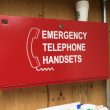FCC makes bold 700 MHz move
In a groundbreaking action, the FCC approved rules for valuable 700 MHz spectrum that include open-access requirements for one portion of the band and an unprecedented public/private network that is expected to make wireless broadband services available to public-safety entities nationwide.
Under the 352-page order, the winner of the 10 MHz D block of spectrum — to be determined in an auction scheduled to begin Jan. 16, 2008 — adjacent to the 10 MHz earmarked for public safety would negotiate an agreement with a national public-safety licensee to build and operate a nationwide wireless broadband network using the combined spectrum.
This public/private arrangement is expected to let public safety benefit from the technological advances achieved in the commercial wireless sector, provide a funding mechanism for such technology to be deployed nationwide and enhance interoperable communications between first-responder agencies.
“While I also would have supported a network exclusively for the use of public safety, the simple reality is that there currently is no way to fund such an enterprise,” FCC Chairman Kevin Martin said. “Many national and local public-safety organizations have expressed support for a public/private partnership approach as their last, best chance to make this network a reality. We cannot afford to let the opportunity that the 700 MHz band offers for public safety pass us by.”
While commercial services can be offered over the network, public-safety users would have priority access during an emergency. The licensees’ agreement will designate what constitutes an “emergency,” but the FCC order provides some guidance for the negotiations on the matter.
“The potential disruption of commercial service in the D Block license, while wholly appropriate in an emergency situation, must nonetheless be limited to the most serious occasions,” the order states. “Otherwise the commercial viability of the 700 MHz public/private partnership could be jeopardized.”
The FCC will review disputes between the D Block winner and the public-safety licensee. FCC Commissioner Michael Copps said he is “perfectly willing to go back to the drawing board” and select another commercial partner or proposal if an agreement cannot be reached.
“I won’t be happy if this happens, but I’m not about to cut corners if it means compromising public safety,” Copps said. “Far better that public safety remains in control of its spectrum — and free to find another model for funding it — than for this commission to bless a sharing agreement that does not fully protect the nation’s citizens and its first responders.”
Not subject to negotiation are reliability and coverage benchmarks. The new network must be 99.7% reliable — a public-safety communications standard — and meet three buildout thresholds: covering 75% of the U.S. population by February 2013, covering 95% of the population by 2016 and covering 99.3% of the population by 2019.
Approval of the order represents a dramatic shift from the existing funding model that relies on widely varying local-taxpayer contributions to pay for systems that often can be renewed only in cycles of 15 or 20 years. Given that the FCC action came less than 15 months after Cyren Call Communications Chairman Morgan O’Brien advanced the notion of a commercial/public-safety partnership — an idea deemed by many to be too late — makes it more remarkable, said Charles Werner, fire chief in Charlottesville, Va., and a supporter of the public/private concept.
“I think that was a bold step for the FCC, ” Werner said. “For once, in the midst of what could have been a situation where money was the overwhelming factor, public safety was on top of the list.”
With a commercial partner obligated to maintain an updated network, public safety should realize the technological and economic benefits of the burgeoning commercial wireless market, said Dana Shaffer, deputy bureau chief for the FCC’s Public Safety and Homeland Security Bureau (PSHSB).
“The days of [public safety] having to meet tomorrow’s challenges with the technology of yesterday — or last year or 10 years ago — will soon be over,” Shaffer said during a panel at the Association of Public-Safety Communications Officials (APCO) conference held last month in Baltimore.
As of press time, the 700 MHz order still awaited Federal Register publication, after which petitions of reconsideration could be filed. Meanwhile, the PSHSB was required to release rules explaining the process associated with selecting the national licensee by Sept. 10. (See sidebar.)
Overall, 1099 wireless licenses will be auctioned in a process that is projected to generate bids totaling $10 billion to $20 billion. In an Aug. 17 public notice, the FCC set an aggregate reserve price of more than $10 billion, with the nationwide 22 MHz C Block license — which requires open-access technologies that allow any device to be connected to a wireless network — having an unprecedented reserve price of $4.6 billion.
Likely bidders in the auction will be “the usual suspects” — existing wireless carriers, cable providers and satellite firms — said Roger Entner, senior vice president of communications for IAG Research. One newcomer to the process will be Frontline Wireless, a proponent of both the open-access and public/private partnership rules, spokeswoman Mary Greczyn said.
A potential wild card in the process is Internet search-engine giant Google, which vowed to bid $4.6 billion for the C Block license if the commission approved rules for the spectrum mandating that the auction winner use the frequencies to offer a wholesale network. The FCC declined to include such a rule, only stipulating that the auction winner comply with the open-access rules.
“The biggest question is Google, because they said they would bid on that [C Block spectrum] if they got the resale requirement, and they didn’t get that,” Entner said. “The question is whether Google was trying to push the FCC into [the wholesale requirement] and they want it either way, or if they will walk off pouting.”

















